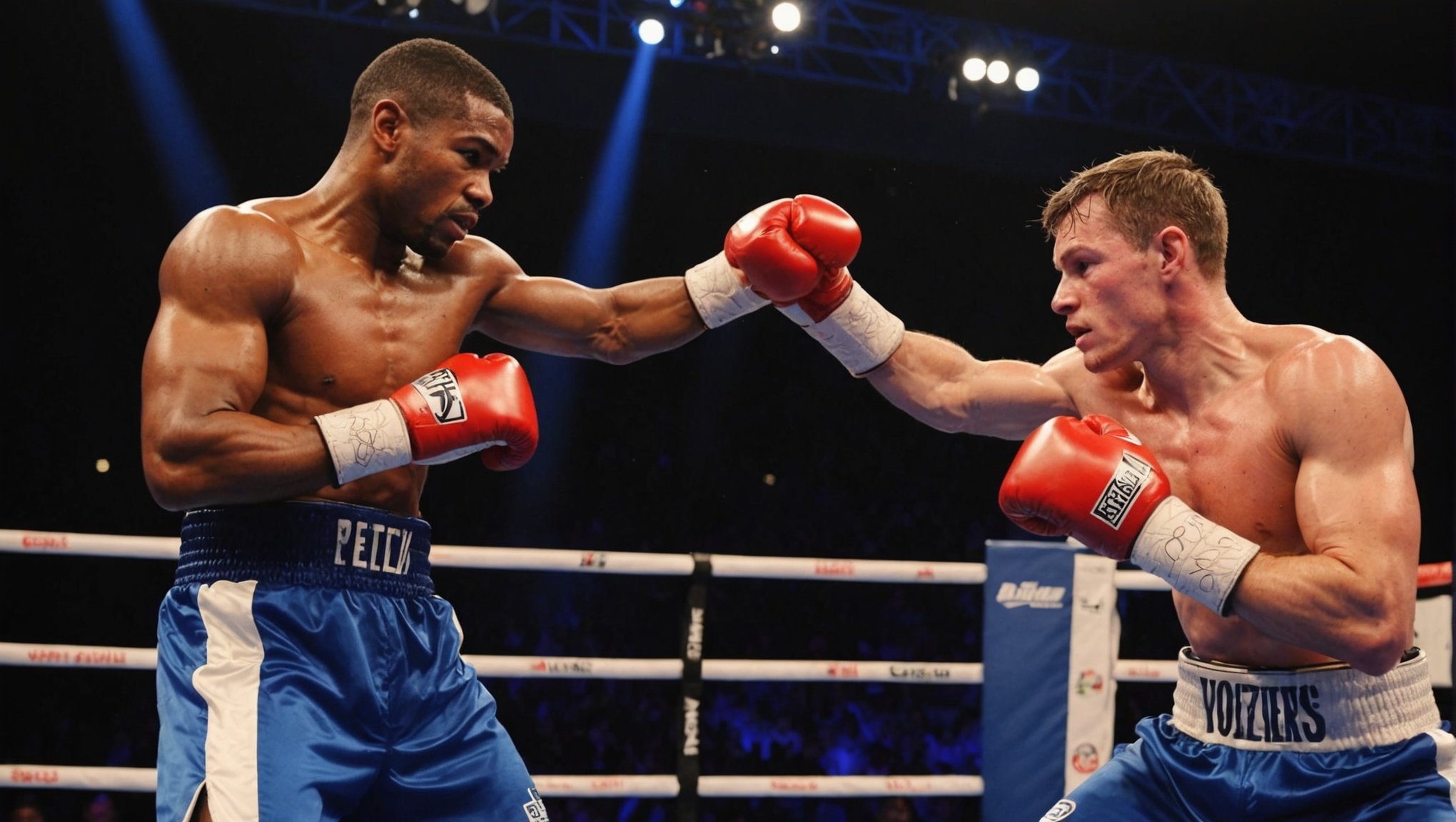Mental Preparedness Strategies
In the world of boxing, mental readiness tactics are just as crucial as physical training. The psychology behind boxing involves a complex interplay of mindset, focus, and resilience that can significantly enhance performance. When boxers step into the ring, they rely not just on their physical prowess but also on their mental fortitude. This mental game can be a decisive factor in the outcome of a match.
UK boxers employ various techniques to sharpen their mental skills. These include visualization exercises where athletes mentally rehearse movements and scenarios they expect to encounter in the ring. Such practices help in building confidence and reducing anxiety. Cognitive training also plays a role, emphasizing positive self-talk and mindfulness to maintain composure during high-pressure situations.
Topic to read : Mastering Mental Focus: Top Strategies for Staying Sharp in Long-Lasting UK Karate Tournaments
The connection between mental preparedness and physical performance is undeniable. A boxer who is mentally equipped can focus better, react faster, and adapt to changing circumstances within a match. Emotional control allows for strategic thinking, rather than being overwhelmed by stress or distractions.
These psychological strategies contribute to a well-rounded boxing skill set, ensuring that the fighter is as mentally agile as they are physically conditioned. Mastering both mental and physical aspects leads to greater success and resilience in the sport.
Also read : Exploring the Ecological Footprint of Major Combat Sports Events in the UK
Visualization Techniques
Understanding and applying visualization for athletes can significantly boost performance levels. This technique, particularly valued in sports like boxing, involves envisioning actions and routines effectively before physical execution. When utilized properly, visualization becomes an advanced form of mental training—often bridging the gap between potential and tangible success.
The Science Behind Visualization
Visualization techniques remarkably alter brain function. The mind perceives visualized actions similarly to physical acts, engaging neural pathways and fostering skill improvement. Numerous studies corroborate this phenomenon, presenting visualization as a powerful training strategy. Athletes who regularly employ visualization report enhanced focus, quicker reflexes, and improved decision-making abilities.
Practical Steps for Effective Visualization
To master mental imagery training, athletes should follow structured routines. Start by setting a quiet environment, clear distractions, and focus on sensory details—a method significantly effective in boxing. Utilize short, realistic scenarios, incorporating vivid details like smells or sounds, to create holistic mental imagery. Repetition strengthens visualization’s efficacy, embedding these scenarios into athletes’ mental frameworks.
Case Studies of Successful Boxers
Several UK boxers illustrate visualization’s profound impacts. For instance, boxers who integrated success visualization into pre-fight preparations often exhibited increased confidence and strategic acumen. These practitioners recorded measurable improvements, consistently outmatching their prior performances. This trend underscores visualization’s pivotal role in achieving peak athletic performance.
Meditation Practices
Boxers, like other athletes, can greatly benefit from integrating meditation practices into their routines. By exploring various meditation techniques, they can enhance their mental game significantly. Mindfulness, for example, helps improve focus and calmness. It includes observing the present moment without judgment and can be integrated into daily workouts. Transcendental meditation, another popular technique, involves repeating a mantra to settle the mind.
Various Meditation Techniques Suitable for Boxers
Boxers may find value in practicing mindfulness meditation and transcendental practices. Mindfulness emphasizes awareness of the present, helping boxers maintain focus during intense bouts. Transcendental meditation uses repetition, fostering a deep state of relaxation that can aid in stress reduction.
Benefits of Meditation in Combat Sports
Meditation benefits in combat sports are notable. It helps boxers maintain composure, providing a competitive edge. Numerous boxers report that meditation aids in handling stress, aligning with effective stress reduction techniques.
Incorporating Meditation into Daily Life
To make meditation a consistent part of life’s demands, boxers should create a routine that fits their schedule. Mindfulness for athletes can be squeezed in before training or as a cool-down. Setting a tranquil environment enhances effectiveness, and a schedule helps build consistency, ensuring a balance between training and mental well-being.
Goal Setting for Performance Enhancement
Establishing effective goal setting strategies is pivotal for optimizing athletic performance. Goal setting is a structured process where performance goals are identified to guide athletes in achieving their highest potential. Implementing a robust plan tailored to achieving athletic targets provides direction and motivation essential for success.
Setting SMART Goals in Boxing
SMART goals—Specific, Measurable, Achievable, Relevant, Time-bound—are critical for boxers aiming for enhanced performance. These goals ensure clarity and focus, which are essential for tracking progress and making informed adjustments. For example, a specific goal could be “Increase punch accuracy by 10% within three months.” This gives a clear performance target, timelines, and measurable outcomes. Such specificity helps boxers maintain motivation and progress accountability.
Tracking Progress and Adjusting Goals
Monitoring progress is crucial to determine whether established performance goals align with the athlete’s capabilities. Methods such as keeping training journals or using performance analytics can track essential metrics. If goals are not met, adjust them based on concrete performance data and thoughtful feedback. This iterative process helps athletes stay aligned with their ultimate athletic targets.
The Role of Coaches in Goal Setting
Coaches play a significant role in setting and achieving goals. They provide expert guidance, constructive feedback, and support, enhancing the goal-setting process. Collaboration and open communication between athletes and coaches are vital to ensure goals are both realistic and challenging. Hence, a strong coach-athlete relationship is essential in the pursuit of performance goals.
Stress Management Techniques
Understanding stress relief methods is crucial for athletes, especially boxers, who often face pre-fight anxiety. Effective anxiety reduction strategies can significantly improve mental resilience and performance in athletes.
Identifying Sources of Pre-Fight Anxiety
Common triggers for anxiety in boxers include the pressure of the upcoming competition, fear of injury, and self-doubt. Recognising these mental blocks is the first step in addressing them. Techniques such as mindfulness can help athletes become aware of their stressors, allowing them to focus on overcoming these challenges. Visualisation exercises also prove beneficial in preparing mentally, enabling athletes to picture a successful performance and reduce anxiety.
Breathing Exercises and Relaxation Techniques
An effective way to calm nerves is through breathing strategies, such as deep diaphragm breathing, which soothes the mind and body. Other methods like progressive muscle relaxation can be helpful, particularly when tension is high pre-fight. These relaxation techniques, when practiced regularly, enhance an athlete’s ability to remain composed under pressure.
Building Mental Resilience
Mental resilience in athletes can be developed through consistent practice of coping mechanisms. Techniques such as positive self-talk and goal-setting help build confidence and focus. Resilience training is strongly linked to better performance outcomes, as athletes become more adept at managing stress and maintaining a clear, focused mind during high-pressure situations.













